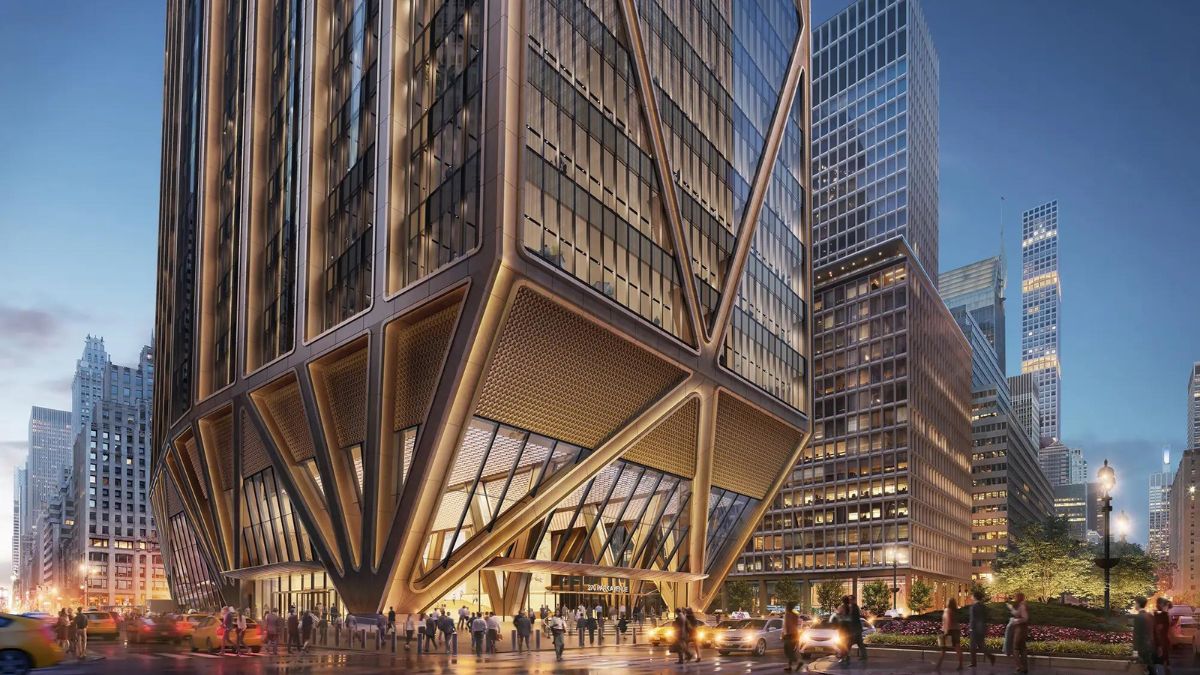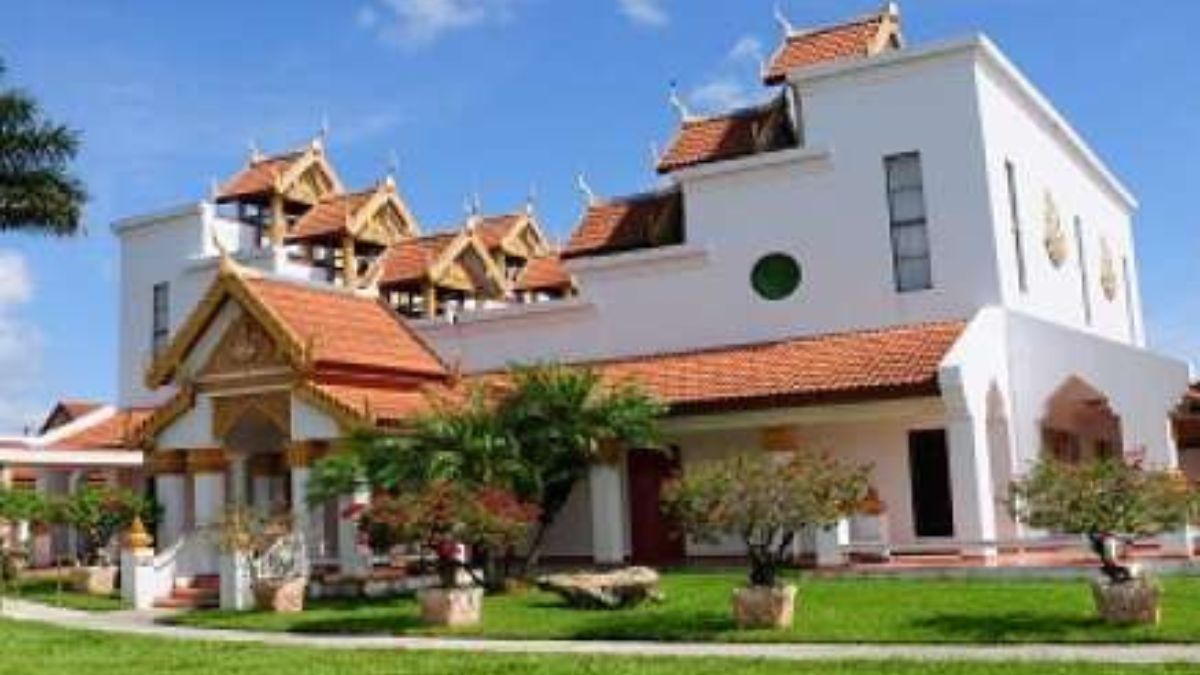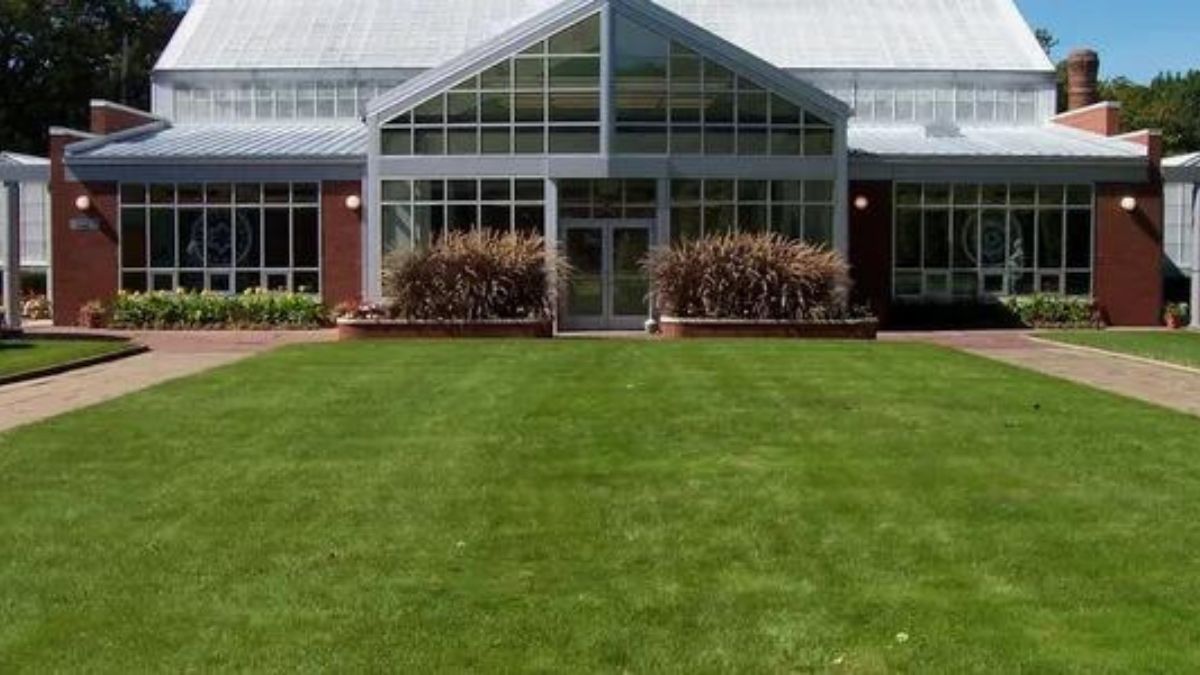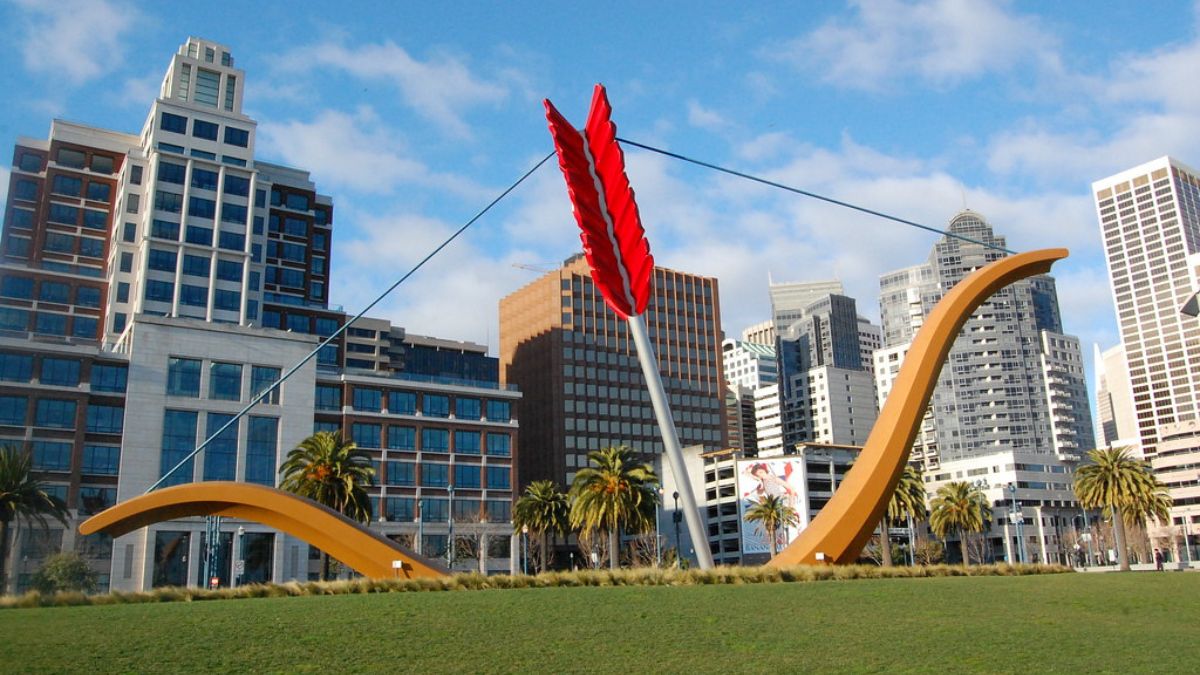Posts
JPMorgan Chase Tower

The JPMorgan Chase Tower is formerly known as the Texas Commerce Tower. This tower stands at 1,002-feet tall and is 2,243,013-square-feet. You can find this 75-story skyscraper at 600 Travis Street in Downtown Houston, Texas, United States.
Fun Fact: Rankings
It is currently the tallest building in the city, the tallest building in Texas, the tallest five-sided building in the world, the 22nd-tallest building in the United States, and the 107th-tallest building in the world.
History
The tower was built between 1979 and 1981 and designed by noted architects I. M. Pei & Partners. In some early plans, the building reached up to 80 stories; however, the FAA expressed concerns that additional height was a risk for aircraft going into and out of nearby William P. Hobby Airport. Nonetheless, when it was completed, it was the eighth-tallest building in the world. A historic building for a historic location, the tower was built on the site where the Uptown Theatre (demolished in 1965) once stood.
How Much Of The Building Is Occupied By Chase?
While the tower’s name reflects the bank JPMorgan Chase, the only space designated to Chase is a single branch office on the bottom floor.
Surviving Hurricane Ike
On September 13, 2008, many of the tower’s windows were blown out as Hurricane Ike struck the city, leaving desks exposed, metal blinds hanging in twisted heaps, and smoky black glass covering the streets below. Police were forced to cordon off the area due to the amount of debris in the streets. It is still not completely known as to how these windows were blown out.
Posts
Wat Buddharangsi

Wat Buddharangsi is a Theraveda Buddhist temple, in the Thai tradition, located in Homestead, just south of Miami. It was built in 1982 to house a congregation that has been around since 1979, and it continues to expand with the South Florida Thai-American community and with an increasing number of non-Thai visitors. Visitors from many backgrounds have described the area as a peaceful and beautiful oasis in the fast-paced Miami metro, a place to meditate or just appreciate the unique grounds. The temple welcomes anyone with an interest in Buddhism and also offers a variety of religious and non-religious events.
The centerpiece of the temple is a 5-ton, 23-foot tall Buddha statue. It’s made mostly of brass but also contains copper, silver, and gold. Visitors can place a gold leaf on the Buddha’s head as a prayer for wisdom, or on the heart as a prayer for love or good health. The statue is named “PHRABUDDHADHAMMACHINARAJ” and is based on a statue with the same name in Phitsanulok, Thailand. It was created for Miami’s Thai Buddhist community in 1997 before the temple was built.
 The central Buddha statue and mediation space at Wat Buddharangsi. Photo: savoryexposure, CC BY-SA 2.0 via Wikimedia Commons.
The central Buddha statue and mediation space at Wat Buddharangsi. Photo: savoryexposure, CC BY-SA 2.0 via Wikimedia Commons.A Growing Community
The complex also includes modest apartments for about six monks who live there at a given time. Visitors can ask them for blessings, and they perform marriages and other religious ceremonies for the community.
 The Jade Buddha at Wat Buddharangsi. Photo: Douglas Jay Benson, public domain via Wikimedia Commons.
The Jade Buddha at Wat Buddharangsi. Photo: Douglas Jay Benson, public domain via Wikimedia Commons.It was designed by Nopporn Poochareon, a Thai-American general contractor and owner of Thai restaurants in Miami. Man of the materials, as well as some of the workers, were sourced from Thailand to keep the temple true to the Thai tradition.
Posts
Rockefeller Park & Greenhouse

Rockefeller Park is the largest park entirely inside Cleveland’s city limits. The park connects a string of parkland that extends from the suburb of Shaker Heights to the shore of Lake Erie. To celebrate Cleveland’s Centennial in 1896, oil tycoon John D.Rockefeller and his wife, Laura Spelman Rockefeller, pledged to deed the city 270 acres of land and donate hundreds of thousands more for the park’s beautification and upkeep—a total of $550 k in turn-of-the-century dollars! The announcement drew cheers from the Centennial celebration’s crowd, and in gratitude, the park was named in their honor.
Rockefeller Park Greenhouse
The plans to build a greenhouse on a portion of the park began in 1902, and the first building opened in 1905. Initially, the purpose of the greenhouse was solely to grow plants that could be transferred to other parks and gardens to beautify the city. Over time, the greenhouse grew to be a botanical destination on its own.
Today Rockefeller Park Greenhouse is a small, four-acre botanical garden with a wonderful assortment of specialty plants, seasonal floral displays, and themed gardens. Are you looking to explore firsthand some beautiful botanical finds? Come indoors to see the greenhouse’s cacti and orchids, an indoor water garden, a fern showhouse, and more.
In December, the gardens and greenhouse are converted into an elaborate holiday display, filled with poinsettias.
There are also six outdoor gardens. The Iris Garden is a delight in springtime. During the summer, the Latin American Garden displays succulents, flowering plants, and tropical fruits found in Central and South America. The Japanese Garden evokes a soothing, tranquil feeling through its materials, plants, and traditional Japanese design. The Mall is a manicured formal garden with statues that symbolize the four seasons, and a Peace Garden leads you through an old-fashioned gazebo to perennial, herb, and rose gardens. A highlight for all visitors, including the visually-impaired, is the Betty Ott Talking Garden. Here plants have been selected for their appeal to all the senses and are planted in raised beds that allow you to get up close to see, touch, and smell them. Descriptions are given in audio, and garden signage is both in English and Braille. As for the park, the outdoor space is filled with arching trees native to Ohio.
There is something in bloom at Rockefeller Greenhouse all year round. Admission is free, and it’s open from 10 to 4 every day, even on holidays. Its small size makes it easy to explore, and it’s often less crowded here than in some of the other parks, making it a hidden gem. Visitors enjoy escaping from cold, winter weather and getting a taste of the desert or tropics in the warm, indoor greenhouses.
More Points Of Interest
Points of interest at Rockefeller Park include the Cleveland Cultural Gardens, four architecturally historic stone bridges, and Doan Brook. The Cultural Gardens and the stone bridges are on the National Register of Historic Places. The park also offers a lagoon, picnic areas, tennis courts, playgrounds, and walks.
Posts
Cupid’s Span

Who doesn’t love love? In 2002, married artists Claes Oldenburg and Coosje van Bruggen built the Cupid’s Span installation to honor romance. Located in Rincon Park along the Embracdero, the piece shows partial images of a bow and arrow lodged in the ground. The 60-foot sculpture is made of fiberglass and steel, making it a sturdy and long-standing piece of construction.
The Meaning
For Cupid’s Span, it’s essential to know why the work of art was created. Because San Fransisco is known as the home port of Eros, Oldenburg and Bruggen saw fit to create a monument honoring this space of love and creativity. The meaning relates to Cupid, the mythological god of desire, attraction, and affection. His counterpart is Eros, signifying that Cupid’s Span unites all aspects of the myth into one giant artwork. There is also a mythological account of Eros shooting an arrow into the Earth to bring fertility. All in all, Cupid’s Span is a mythological reimagining of ancient ideas and principals.
The Inspiration
Oldenberg and Bruggen also chose to make this piece because of its similarity to the Golden Gate Bridge. While the meaning behind the work of art is more transcendental, the physical component is meant to emulate and pay tribute to the city’s famous bridge. Both works of steel and both suspended in their own way, Cupid’s Span and the Golden Gate Bridge represent the golden ideals of the city and how those can manifest when people come together to create something amazing.
-

 GENERAL1 year ago
GENERAL1 year agoDiscovering the Artistic Brilliance of Derpixon: A Deep Dive into their Animation and Illustration
-

 Posts1 year ago
Posts1 year agoSiegel, Cooper & Co.
-

 Lifestyle1 year ago
Lifestyle1 year agoPurenudism.com: Unveiling the Beauty of Naturist Lifestyle
-

 Lifestyle1 year ago
Lifestyle1 year agoBaddieHub: Unleashing Confidence and Style in the Ultimate Gathering Spot for the Baddie Lifestyle
-

 HEALTH1 year ago
HEALTH1 year agoTransformative Health Solutions: Unveiling the Breakthroughs of 10x Health
-

 Entertainment1 year ago
Entertainment1 year agoGeekzilla Podcast: Navigating the World of Pop Culture, Gaming, and Tech
-

 Entertainment1 year ago
Entertainment1 year agoKhatrimaza Unveiled: Exploring Cinematic Marvels and Entertainment Extravaganza
-

 BUSINESS1 year ago
BUSINESS1 year agoUnlocking the Secrets to Jacqueline Tortorice Remarkable Career and Accomplishments
